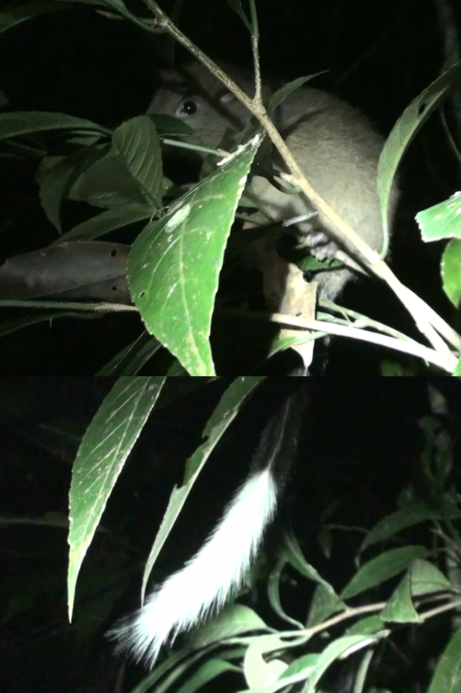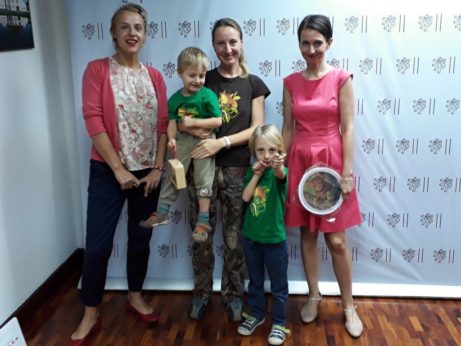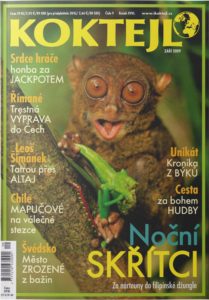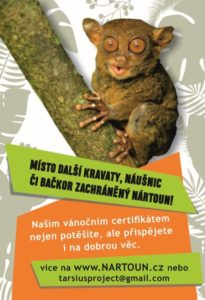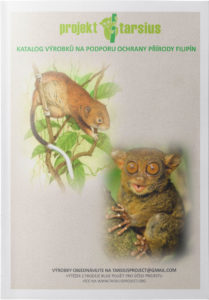How do the tarsiers talk to each other?
 Acoustic communication, that is how the tarsiers talk to each other, was one of the main goals of our research of the Philippine tarsiers living on Bohol Island. Tarsiers as nocturnal animals use especially olfactory and acoustic communication. Thanks to the huge eyes their vision is also very good. The Philippine tarsiers are quite solitary, in opposite to some of related Indonesian species. They spend most of the time alone, during hunting at night as well as daily resting. Therefore, we were interested how rich is their acoustic repertoire. Several months long research during two years, hours and hours spent in the forest and thousands of audio records led us to desired results that have just been published in scientific journal International Journal of Zoology.
Acoustic communication, that is how the tarsiers talk to each other, was one of the main goals of our research of the Philippine tarsiers living on Bohol Island. Tarsiers as nocturnal animals use especially olfactory and acoustic communication. Thanks to the huge eyes their vision is also very good. The Philippine tarsiers are quite solitary, in opposite to some of related Indonesian species. They spend most of the time alone, during hunting at night as well as daily resting. Therefore, we were interested how rich is their acoustic repertoire. Several months long research during two years, hours and hours spent in the forest and thousands of audio records led us to desired results that have just been published in scientific journal International Journal of Zoology.
The easiest way how to find a tarsier is after sunset. You sit in the forest and wait to hear a whistle-like “loud call”. The loud call is typical for all tarsier species as well as other nocturnal primates and serves in long-distance communication, advertising of the territory or communication with a partner. We have discovered that Philippine tarsiers use three types of these long-distance calls. Moreover, individual differences can be found in these calls. Based on the sound you can recognize which individual is calling. It is for the first time in tarsiers that such individual differences in calls have been revealed. Some other calls are very soft and audible only from immediate proximity. For example a kind of chirping sound that is very similar to ubiquitous sounds of insects and even our experienced hunter Julius had problems with distinguishing it. A big surprise was a sound resembling rather a bird song than a tarsier call. Tarsier mother and baby use other two types of calls that have not been recorded in adult animals.
Our findings have also conservation significance. Based on the calls we can monitor the animals in the wild, record their distribution and distinguish individual. Comparison with other tarsier species can help us to resolve their relationships. The original article can be downloaded here.
Copyright text and audio: Milada Řeháková, the Tarsius Project

